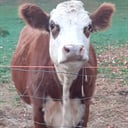What did Arno Penzias and Robert Wilson discover in 1964?
In 1964, Arno Penzias and Robert Woodrow Wilson at the Crawford Hill location of Bell Telephone Laboratories near Holmdel Township, New Jersey built a Dicke radiometer that they intended to use for radio astronomy and satellite communication experiments. On 20 May 1964 they made their first measurements which clearly showed the presence of the microwave background, with their instrument having an excess 4.2K antenna temperature for which they could not account. Sharing their findings with other groups it was determined that the antenna temperature was indeed due to the microwave background in the universe. Penzias and Wilson received the 1978 Nobel Prize in Physics for their discovery.
The cosmic microwave background (CMB) is the thermal radiation left over from the time of recombination in Big Bang cosmology. In older literature, the CMB is also variously known as cosmic microwave background radiation (CMBR) or "relic radiation". The CMB is a cosmic background radiation that is fundamental to observational cosmology because it is the oldest "light" in the universe, dating to the epoch of recombination. With a traditional optical telescope, the space between stars and galaxies (the background) is completely dark. However, a sufficiently sensitive radio telescope shows a faint background glow, almost isotropic, that is not associated with any star, galaxy, or other object.
More Info:
en.wikipedia.org


